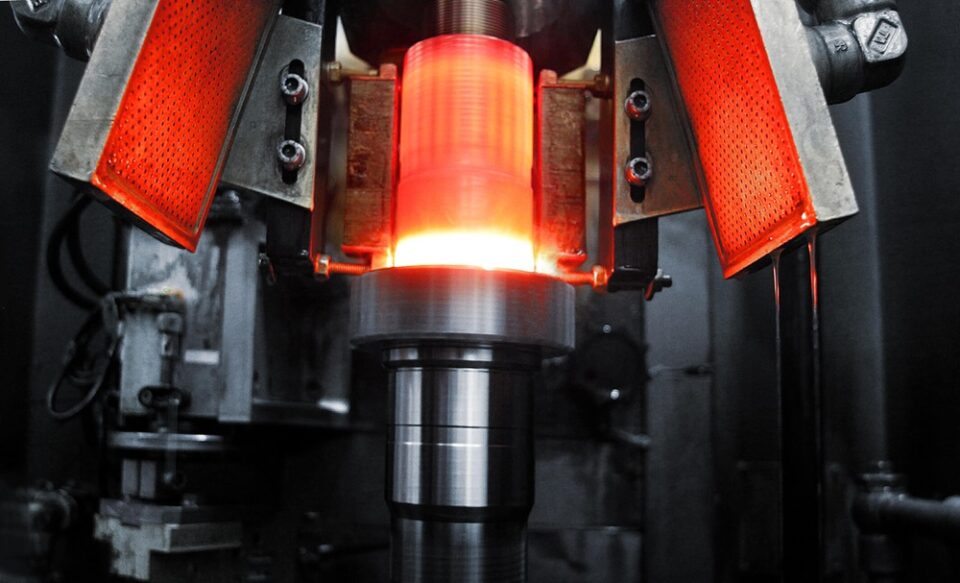In the metalworking industry, heat treatment, a process that alters material physical and mechanical properties to favor specific attributes, is crucial. This process ensures that metal components in various fields, such as aerospace, construction, and automotive industries, among others, are of high quality, efficient and durable. The article will delve into the world of commercial heat treatment by highlighting its importance, processes involved and application in different sectors.
The Significance of Heat Treatment
In industrial metal processing, heat treatment stands out significantly. Metals are made more suitable for specific applications by enhancing their properties, such as hardness, strength, ductility, wear resistance or corrosion resistance. By manipulating heating and cooling cycles, metallurgist can control the microstructure of metals to have desired characteristics needed for a particular use.
Basic Operations in Commercial Heat Treatment
Commercial heat treatment rests on several fundamental operations. These are tailored to achieve certain results, depending on the type of metal and the properties required.
Softening (Annealing)
Annealing is aimed at softening metals, making them ductile, while relieving internal stresses. The metal is heated to a given temperature and held at that temperature before being slowly cooled within the furnace itself. This process is critical for sheet metals that have been hardened through cold work so that they could be machined further or formed better than when they were hard worked. Moreover, it may also improve workability for products that use only industrial copper or aluminum.
Normalizing
Normalizing consists of heating steel above its upper critical temperature to austenitize it, then air-cooling it afterwards. This creates a fully refined grain structure, which enhances its mechanical performance, i.e., strength and toughness, respectively. Structural steel members, castings, and forgings must undergo a normalizing cycle in order to achieve a uniform microstructure with predictable behavior during service.
Hardening
Hardening allows increase in hardness as well as strength of metals, followed by rapid cooling (quenching) from elevated temperatures to transform metal into martensite, an extremely hard and brittle phase. The metal is heated such that it forms austenite and then quenched in either water, oil, or air, thereby transforming the austenite into martensite, which is known for its hardness and brittleness. This process is important in producing tools like cutting tools, drill bits, and wear-resistant parts, including gears and bearings.
Tempering
Tempering reduces hardness after hardening while maintaining some level of toughness. The heat-treated metal is reheated to a temperature below its critical point before being cooled at a controlled rate. This improves the toughness of hardened steels, e.g., springs in automotive components that have to balance between high strength (hardness) and some ductility (strength).
Development of Hardened Case
In case hardening, only the outermost region of steel undergoes hardening while the centre remains unaltered, retaining properties like toughness or plasticity. Techniques such as carburizing and nitriding introduce carbon or nitrogen, respectively, on their surfaces, forming hard compounds that can resist wear. These processes are necessary for gears, shafts, and other parts requiring a combination of a tough interior with a hardened surface.
Stress Relieving
Stress-relieving entails the removal of residual stresses from metals caused by processes like welding, machining, or casting.
The steel then goes through heating up to just below A1, after which it slowly cools down so as to avoid any distortions or cracks occurring due to thermal strains developed during stress-relieving procedures carried out after fabrication steps like welding, brazing and machining operations.
This results in changes in shapes, sizes and even dimensions of stock material employed for making mechanical components such as welded structures assemblies bolts nuts screws plates sheets channels angles beams pipes tubes, etc.
Advanced Commercial Heat Treatment Techniques
The growth in technology has brought about highly developed methods of heat treatment that are very precise and controlled as far as metal properties are concerned.
Induction Hardening
Electromagnetic induction is used to concentrate the heat locally, followed by rapid cooling during induction hardening. This method allows precise control over the area being hardened, making it suitable for complex shapes and localized hardening. Induction hardening is commonly used for automotive parts like gears and crankshafts due to its consistent results and efficiency.
Laser Heat treatment
Laser heat treatment involves heating specific areas of the metal using high-energy laser beams. It is a technique that provides exactness, especially when parts demand localized hardening or surface modification. In aerospace manufacturing and medical device manufacturing, this process is very useful because it plays a role in some aspects of life support systems.
Vacuum Heat Treating
Vacuum heat treatment takes place in an enclosed chamber to prevent oxidation and contamination. The method ensures clean surfaces with high mechanical strength, making them essential for use in applications requiring high performance characteristics. Vacuum heat treatment is crucial for aerospace defense components made from reactive metals, as well as for critical applications involving alloys with elevated alloy content, like stainless steel.
Applications of Commercial Heat Treatment
Commercial heat treatment has multiple applications across many industries, each employing distinct processes that suit their respective needs.
Automotive Industry
In the automotive industry, heat treatment involves improving the performance and durability of major components such as gears, crankshafts, and engine parts through hardening techniques designed specifically for these items to withstand excessive wear and stress, thus making cars more reliable overall.
Aerospace Industry
Aerospace sector components, such as turbine blades or landing gear, require exceptional strength coupled with fatigue resistance. Advanced-level heating processes like vacuum & induction hardening help satisfy these extremely strict demands, ensuring safe aircraft that are efficient enough.
Tool and Die Manufacturing
Heat treatment is critical in the production of tools as well as dies, given that they are subjected to very high pressure and repetitive use. Hardening and tempering processes provide the hardness and toughness required, thereby increasing the longevity of cutting tools, molds, or dies made for fabrication.
Medical Devices
When it comes to these items, mainly surgical instruments or implants, strict quality standards like high precision and biocompatibility are essential. Laser hardening and vacuum heat treatment are some of the techniques used during heat treatment, which ensures that such devices meet recommended standards and can be relied upon during medical procedures.
Construction Industry
Heat treatment improves the properties of structural steel and reinforcing bars used in construction. Materials like steel are annealed or normalized through various heating treatments, improving their strength as well as ductility, which guarantee stability and durability in buildings, among other structures.
The Future of Commercial Heat Treatment
Commercial heat treatments are developing along with industries. New tendencies and innovations define future trends of this vital process.
Sustainable Heat Treating
Sustainable methods of heat treatment have been developed due to environmental concerns. This approach has seen more acceptance towards processes that reduce energy consumption on site and minimize waste by using eco-friendly quenchants. Moreover, technological advancements applied in the design of furnaces with higher efficiency levels, besides induction systems, have contributed towards environmentally conscious manufacturing practices.
Digitalization and Automation
The use of computer technologies and mechanization has been changing the processes of heat treatment. With intelligent machines, it is possible to regulate heat treatment parameters in an accurate manner through advanced monitoring systems, data analytics, and artificial intelligence. In this way, automation minimizes human errors, thereby boosting manufacturing’s productivity by ensuring uniformity in quality.
Additive Manufacturing
The emergence of additive manufacturing (3D printing) has brought about changes in heat treatment practices. Heat treatment plays a crucial role in enhancing the characteristics of parts that have been manufactured using additive methods, which often demonstrate anisotropic features. The mechanical properties, including performance, can be enhanced through tailor-made heat-treating procedures for printed elements made from 3D-printed materials, thus extending the range of their applications among different industries.
Commercial Heat Treatment
Commercial heat treatment is one of the key principles in modern metallurgy as far as the production and behaviour of metallic components are concerned. Industries can enhance the metal properties to meet specific requirements by applying various techniques associated with heat treatments. Technology keeps pushing progress in the area of thermal processing while bringing more new solutions and better regulation over metal qualities. As a result, modern metallurgy highly appreciates the importance of tempering and its vital influence on industrial applications worldwide.

